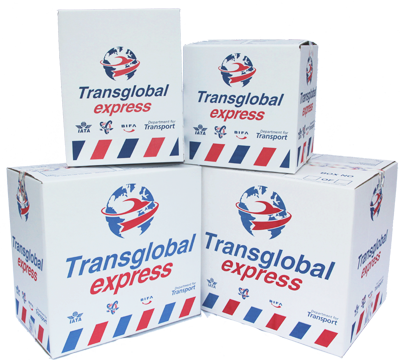Parcel Packaging Guidance
Your parcel is precious! Package it with care.
We know you want your parcel to arrive at its destination in pristine condition. So it's important to help ensure this happens by packaging your parcel correctly.
Proper packaging not only protects your own parcel, but helps to prevent damage to other customers' goods in transit.
IMPORTANT: Packaging is ultimately the responsibility of the shipper. Our carriers insist on proper packaging and may refuse to accept a parcel that is unsuitably packaged. Drivers are not necessarily expected to make this judgement upon collection – in some cases it may be returned at cost following assessment at the carrier's depot.
All carriers handle parcels with the same standardised level of care. Carriers may ignore "fragile" or other labels. Parcels may be stacked and are processed through automated sortation centres using conveyors and chutes. Orientation ("this way up") cannot be guaranteed.
When making a claim for damaged parcel contents, claims for damage to packaging materials, inner or outer, are not accepted.
Some carriers will charge extra for non-stackable items. Please see our stackability guidance for more information.
To protect your goods as effectively as possible, please follow these easy guidelines:
The Shipping Carton
The "shipping carton" is the box in which you place your goods.
- Size - make sure the size of your box is appropriate to the content. Overloaded boxes may burst; under-filled boxes are likely to collapse.
- Strength - be sure to choose boxes strong enough to hold the full weight of your consignment, made of corrugated cardboard and with good quality outer liners. Use heavy duty, double-layered cardboard for valuable items. Check the weight specification of the package, and do not exceed this limit.
- Quality - always use high quality materials. If reusing old boxes, ensure they are in a good enough condition to withstand the journey and be sure to remove old labels.
REMEMBER!
- Never use boxes that have hazard labels or symbols on them. This includes UN numbers. These parcels will be stopped by the courier and may incur fines, even if you have attempted to cover them up.
- Please do not strap boxes together. Each box should have its own label.
- All contents must be packaged in some way, and packaging made of fabric or plastic is not suitable.
We can supply you with reinforced, double-walled cardboard boxes which can be delivered to your door via TNT or Interlink on a next day delivery service for £7.95 + VAT. These are available in the following sizes:
| Size | L x W x H (cm) | L x W x H (inches) | Unit Price | |
|---|---|---|---|---|
| Small | 40 x 30 x 40 | 16 x 12 x 17 | £1.85 | |
| Medium | 40 x 30 x 50 | 16 x 12 x 20 | £1.95 | |
| Large | 60 x 40 x 55 | 24 x 16 x 23 | £2.50 | |
| Extra Large | 60 x 50 x 58 | 24 x 20 x 23 | £2.75 |
Inside the Carton
- Cushioning - use materials such as bubble wrap, kraft paper and loose fill polystyrene to protect your items. There should be at least 5cm (6cm if using DHL Express or TG Express) of cushioning between each item, and between the items and the carton wall. Materials such as towels and blankets are not suitable for cushioning.
- Positioning - Place fragile goods in the centre of your package, ensuring that they do not touch the sides. Use cardboard dividers when sending flat, fragile material such as vinyl records.
REMEMBER! You should fill all remaining space in the box with additional cushioning material to minimise the impact of transit on your items.
Packages should be able to withstand a drop from waist height onto a solid floor.
Sealing and Labelling
- Seal your items with a quality adhesive parcel tape, not sellotape or other materials such as rope or ribbon. (For DHL Express and TG Express, this must have at least 28mm width.)
- Customs may need to inspect the contents of your package. Seal it securely, but do not overseal it!
- Ensure that your shipping label (also termed air waybill) is securely attached to the flat topside of your parcel. The barcode and shipping address should be clearly visible and not obscured in any way.
Distinctive Items
- Sharp items such as scissors should be fully protected at edges and points with securely fixed, heavy cardboard.
- Small items should be packed into flyers (polythene courier/mailing bags).
- Powders and fine grains should be placed in sturdy plastic bags, securely sealed and packed in a rigid fibreboard box.
- Liquids should be stored in leak-free containers, packed with a strong, lightweight internal material such as Styrofoam, and sealed with a plastic bag.
- Semi-liquids or greasy and strong-smelling substances should be sealed with adhesive tape and wrapped in grease resistant paper.
- Rolled plans, maps and blueprints should be stored in triangular rather than cylindrical tubes. They are stronger!
- Data, discs and audio tapes should be fully cushioned for extra protection.
Carrier Guidance
Please note: there are additional packing requirements for our DHL Express and TG Express services.
For more carrier-specific information, you can take a look at carriers' own packaging guidelines.
Sending wooden packaging, pallets or crates?
Many countries require wooden packaging materials such as pallets or crates to be heat-treated prior to shipping. This is due to the ISPM 15 regulation, which exists to protect local ecosystems from foreign insects and disease.
Failure to comply can incur delays, fines and even declined entry into the country. Please see our ISPM 15 regulation information to see if the regulation applies to your destination country.
Other Help Topics
Next day delivery available on high quality Packaging Supplies...



